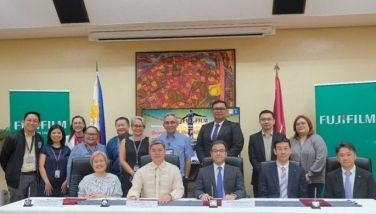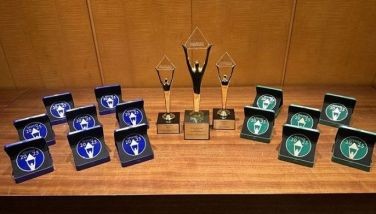On the Halad and Tipiganan
In every life there are moments of enchantment, moments when reality seems to fade away and you feel lifted up like an ethereal entity, up into a state of ecstasy. Perhaps, these were the moments when you had your first kiss with someone you so deeply loved, or perhaps, when the long lost songs of your youth came wafting with the wind to awaken sweet memories of wine and roses. Whatever it was, the experience touched you to the very core and as you came back to the real world, you felt a longing for a repeat exposure to what you had just gone through.
I felt this enchantment at the height of Halad 2010 of Dr. Jose (Dodong) Gullas last Wednesday. No, it was not a kiss that did it (I’m past the kissing age, you know), but the songs, yes the songs, for these were music spawned from Cebuano souls exuding sentiments only Cebuano hearts can understand.
“Matud nila ako dili angay…” went the strain of Ben Zubiri’s masterpiece, and the self was at once transported to that long forgotten season of frustration and gratification in the affairs of the heart, a time of incessant longing yet also a time of unmeasured thrills.
Music, when soft voices die, vibrates in the memory, a poet once wrote. And indeed, the music of our youth is forever vibrating in our hearts where it lies buried in the exigencies of wordly concerns until a golden moment like the Halad comes and brings back the moonbeam and the flowers.
Yet what happened to the audience of Halad was more than a reawakening of youth and youthful desires. For the songs, reinforced with reenactments of native cultural practices, made one look inwardly at himself and rediscover his roots and his heritage, those mores and traditions, values and modal traits that distinguish him from other people. This event seems to say: “This is who you are – a Cebuano. You have the right to be here”, a place in the sun your forebears founded and died for, for your sake.
National identity is important, but more important is ethnic distinctiveness. One’s ethnic group is family. It’s his kind of people, the source of support, comfort and security. Within this close circle of commonalities one recognizes himself in others as others recognize themselves in him.
That’s why it’s vital to preserve the identity of one’s social group. That’s why there’s Halad.
The rationale behind Halad, as explained by its proponent, Dodong Gullas, is to create a keen awareness among Cebuanos of their rich cultural heritage, particularly in songs and musical arts. The strategy is to bring together well known Cebuano singers, composers and culture-conscious people for an evening of songs and musical numbers focusing on the best there are in Cebuano arts.
Entertainment plus self-discovery is therefore the be-all and end-all of Halad. Beyond these is the hope that this project will serve as a motivating force for more culture-related initiatives in this part of the country thereby ensuring the popular acceptance and perpetration of the Cebuano culture and traditions. Such initiatives could be in the form of in-deep research on the various aspects of that culture – e.g., folklore, folk medicine, religion, rituals, artifacts, and superstitious beliefs and others.
But research without an institution to preserve its outputs can do little. That’s why in addition to the Halad project, Dr. Gullas has also set up a body named “Ang Tipiganan sa mga Handuman nga Kanta ug Kinaiyang Sugbuanon Foundation, Inc.” which is tasked to collect, display, preserve and propagate elements of Cebuano culture. For this purpose a museum has been set up in the old building of The Freeman at the corner of V. Gullas and D. Jakosalem streets.
Inaugurated last Tuesday, this museum will serve as a show window of traditional musical instruments, original scores of classical songs as well as portraits of ethnic rituals and practices. As such it will be an educational center, sort of, where young Cebuanos can learn about the kind of people their forebears were and the kind of persons they are. In this way the ideals and values in the past can be learned and given a strong anchorage in their mind and heart thereby broadening the dimension of their formal education.
Halad and Tipiganan – what’s the driving force behind all these? The answer is the late Don Vicente Gullas and Inday Pining Rivera Gullas, both strong advocates of Cebuano culture during their time, for whose memory their youngest son, Dodong Gullas, along with wife Nena, is dedicating these projects.
* * *
Email: edioko_uv@yahoo.com
- Latest
- Trending

























